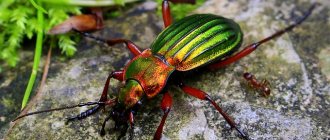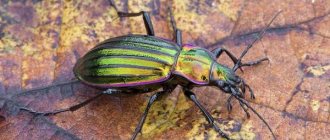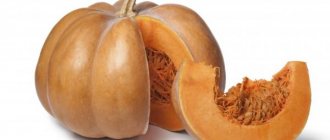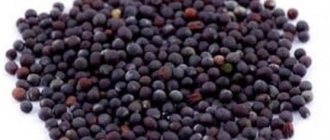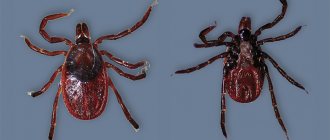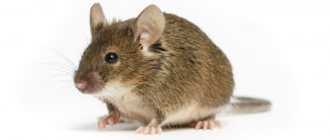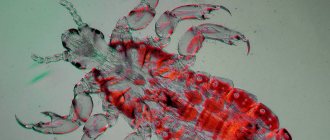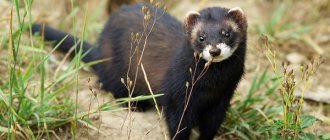Home » Garden and vegetable garden » Vegetable garden » Vegetables
Vladimir 04/25/2020
209559 Views
We invite you to familiarize yourself with the description of the most popular varieties of pumpkin. There are probably no summer cottages in Russia where pumpkins grow. Its history goes back many centuries. It is known that pumpkin was used by the Mayans, knowing about its healing properties. This vegetable has a great advantage over all others - it can be stored for a long time, and you can eat not only the juicy pulp, but also the healthy seed.
Sweetie
Description of the variety. Pumpkin is cold-resistant and tolerates transportation well. It is resistant to drought, and, if crop rotation is observed, to diseases of melons and melons. Late-ripening: 120 days pass from planting seeds to harvesting. The length of the lash is 1.3-1.7 m. Productivity is up to 25 kg per plant.
The fruit has a hard orange bark and dense pulp of the same color, has a spherical shape and weighs 2-3 kg. Well segmented. When grown on an industrial scale, the fruits can reach a weight of 100 kg - therefore, Konfetka pumpkins are classified as large-fruited. It has a high content of carotene and ascorbic acid, the sugar content of the fruit is about 8%.
General information and classification
Decorative varieties
The pumpkin family includes 27 species. A huge number of varieties have been bred from each.
In our country, 3 types of pumpkins are most often grown:
- large-fruited
- nutmeg
- strong-willed
- Hard-skinned varieties (common pumpkin) include vegetables with thick, woody skin. They usually ripen earlier than anyone else - at the end of summer, beginning of autumn.
- Butternut squash love warmth, so they bear fruit best in areas with a warm climate. They have a long growing season; most often, in our country they need to be planted as seedlings.
- Large-fruited cucurbits produce the largest, sweetest fruits. They are best suited for long-term storage, growing in cold parts of the country.
- There is a tomato variety called purple pumpkin.
According to their purpose, pumpkins are divided into:
- table varieties
- feed
- decorative
We will describe different varieties for cultivation in different regions of Russia, taste, etc.
Butternut or Walnut or Squash
Description of the variety. Nutmeg. Pumpkin does not tolerate temperatures below 10°C and needs moderately moist soil. With proper agricultural technology and prevention, it is resistant to all known diseases and pests. Late-ripening: 120 days or more pass from planting seeds to harvesting. The length of the lash is 1.5-2.5 m. Productivity is 7.5-25 kg per plant.
The fruit has a hard but thin light orange bark and dense carrot-colored pulp, has the shape of an elongated pear and weighs 1.5-2.5 kg. Butternut pumpkins are distinguished by a high content of ascorbic acid, B vitamins, as well as phosphorus, magnesium and calcium. The sugar content of the fruit is about 10%.
Real reviews from gardeners
- Elena Igorevna, 49 years old
For many years I have been planting country pumpkin seedlings in the garden. From experience I can say that it takes root best in the Voronezh region. The variety is not afraid of sandy soil, and moderate temperatures allow it to ripen on time.
- Milena Yurievna, 32 years old
In the Urals, it is easier to grow sweet pumpkins than tomatoes. You don't need a greenhouse or hotbed for this. The most important thing is to choose frost-resistant varieties that are not afraid of frost, pests and common diseases.
Winter sweet
Description of the variety. The pumpkin is large-fruited, cold-resistant, tolerates transportation well and has a shelf life. It is resistant to drought, but is sometimes susceptible to white mosaic, gray mold and fusarium. Late-ripening: 130-140 days pass from planting seeds to harvesting. The length of the lash is up to 3 m. Productivity is up to 30 kg per plant.
The fruit has a hard gray bark with slightly noticeable spots of different colors and juicy friable egg-yellow flesh, has a spherical, slightly flattened shape and weighs 6-12 kg. Well segmented. Winter sweet pumpkins contain a large amount of vitamins and microelements; the sugar content of the fruit is about 10%.
Beneficial features
Our ancestors began to use the fruits of this plant as food; it was presented to the table in Ancient Rome and Greece almost 5 thousand years ago. In the 20th century, detailed studies of the fruit showed that its pulp contains many substances useful for human health:
- Vitamins A and E;
- Vitamin C;
- Vitamins B and K;
- Zinc, calcium and potassium, magnesium, fluorine, as well as the rare vitamin T;
- Amino acids, pectins and fiber.
Honey dessert
Description of the variety. The pumpkin is large-fruited, long-climbing, frost-resistant, tolerates transportation well and has an average shelf life. Resistant to drought and diseases. Early ripening: 95-100 days pass from planting seeds to harvesting. Productivity – up to 30 kg per plant.
The fruit has a hard bright orange bark and dense juicy carrot-colored pulp, has a spherical, slightly flattened shape and weighs 3-11 kg. Well segmented. Pumpkins of the Honey Dessert variety are distinguished by a high content of carotene; the sugar content of the fruit is about 10%.
Exotic varieties
Pumpkin Holosemyanka
There are also hard-barked pumpkins, which are specially grown for seeds, and the pulp is used as usual - for food; they are called gymnosperms. They can be stored for no more than 60 days, then the seeds begin to germinate.
This subspecies includes the mid-early Danka Polka , which has tasty, medium-sized whitish seeds and starchy, low-juicy pulp, as well as the mid-season Golden Seed , which produces a mass of medium-sized creamy seeds. It has crispy flesh with a pleasant taste. These varieties have tasty seeds, but are still covered with a skin, but the Golosemyanka has only a thin dark green film.
Since such varieties were originally created for processing seeds into oil and for other technical purposes, their pulp did not have a good taste. Over time, this deficiency was corrected.
Hard-bark pumpkins also include very original pumpkins called spaghetti. They are tasty, they can even be eaten raw, and during heat treatment the pulp breaks down into individual fibers.
the name Spaghetti ; its fruits, weighing about 1 kg, look like small creamy melons, the flesh is beige, not juicy, with a slight vanilla aroma. The mid-early Polish variety Pyza has larger pumpkins, dark yellow, with bright orange flesh of medium juiciness and density.
Marble
Description of the variety. The pumpkin is large-fruited, long-climbing, tolerates transportation well and has a shelf life. Not resistant to drought. Late-ripening: 130-140 days pass from planting seeds to harvesting. The length of the lash is up to 3 m. The yield is 1.6-3 kg per plant.
The fruit has a hard, wrinkled green bark with noticeable spots of light color and juicy, friable egg-yellow flesh, has a spherical shape and weighs 4-5 kg. Well segmented. Marble variety pumpkins contain vitamins A, B and E, as well as carotene, potassium, magnesium and other useful elements. The sugar content of the fruit is about 10-12%.
Bush pumpkin - what is its peculiarity and varieties
This variety of crop is ideal for small garden plots. Its peculiarity is that it does not form long lashes, but grows as a compact bush. The fruits of this pumpkin are formed directly at the base of the plant.
The most popular varieties:
- Amazon;
- Sweet early;
- Smile;
- Crocus;
- Gribovskaya;
- Lel;
- Roll.
Amazon
A mid-season type of pumpkin, the harvest of which is stored for 4 months. Its flattened fruits are orange in color, weighing up to 2 kg. The pulp is crispy, dense, aromatic, sweet orange in color. The variety is heat-loving.
Sweet early
Pumpkin has an accelerated growth rate. Its fruits weigh up to 3 kg and ripen in 3 months. The skin is firm but thin, and the flesh is crisp, soft, and orange-red.
Smile
Pumpkin Smile is characterized by bright orange large fruits that are distinguished by their sweetness and pleasant aroma. The variety is cold-resistant, early ripening.
Crocus
Bush pumpkin. Valued for its resistance to temperature changes and good transportability. Its fruits are medium in size, weighing up to 5 kg. The pulp is juicy, sweet, aromatic, suitable for any type of processing.
Gribovskaya
Pumpkin Gribovskaya is characterized by elongated fruits, the weight of which reaches 5 kg. The peel is dense, thin, orange with stripes of a gray-green hue. The pulp is juicy, sweet, ideal for making desserts.
Lel
The variety belongs to the category of early ripening species. The fruits are flattened and ribbed with a light ash striped skin. Pumpkin is not used in cooking, but is used for the green conveyor belt.
Roll
A large-fruited table variety, the gray spherical pumpkins of which reach 10 kg. The taste is average, but pumpkin juice contains many useful components. The variety is not subject to long-term storage and transportation.
Melon
Description of the variety. The pumpkin is large-fruited, long-climbing, tolerates transportation well and has a shelf life. Characterized by average resistance to drought and cold. The variety is mid-season: 110 days pass from planting seeds to harvesting. The length of the lash is up to 5 m. Productivity is 30-45 kg per plant.
The fruit has a hard, slightly wrinkled dark orange bark and dense orange pulp, has a spherical shape and weighs up to 15 kg. Well segmented. Melon pumpkins contain vitamins A, B and C, as well as carotene, sodium, magnesium and fiber. The sugar content of the fruit is 9-15%.
Characteristics of hard-bark pumpkin varieties
The hard-barked or ordinary pumpkin is the most cold-resistant and the climate of the middle zone suits it quite well. It is ahead of other types of pumpkins in terms of ripening, reaching maturity by the end of summer - beginning of autumn, but is inferior to them in taste. Many old domestic varieties have pale and tasteless flesh, almost like that of forage pumpkins. In addition, it is fibrous and coarse, and contains little sugar and carotene. However, among modern varieties there are quite worthy of your attention.
Plants of hard-barked pumpkins can be either long-climbing or bushy, which is convenient for small areas. The lashes and heavily dissected leaves have spiny pubescence. The peduncle is without expansion, thick, sharply faceted. The fruits are round or slightly elongated, not the largest. The seeds are numerous, medium in size, in a whitish shell with a smooth rim.
The bark is yellow-orange in color, often with a green pattern in the form of stripes, spots, and a net. As the name suggests, it is hard, and the ripe fruits have a real shell. But this ensures good preservation; the fruits of only one subspecies of hard-bark pumpkin – gymnosperm – do not last long.
Chit
Description of the variety. The pumpkin is climbing, tolerates transportation well and is characterized by keeping quality. It is characterized by high resistance to cold, temperature changes, and anthracnose. The variety is mid-season: 115-125 days pass from planting seeds to harvesting. Productivity – 5-7 kg per plant.
The fruit has a hard grayish bark and yellow-orange pulp of medium density, has a spherical, slightly flattened shape and weighs 2.5-3 kg, with weak segmentation. Pumpkins of the Kroshka variety contain a lot of useful substances. The sugar content of the fruit is more than 9%.
Varieties of hard-bark pumpkin
This group also includes zucchini and squash.
- This variety can most often be found in Russian areas.
- Hard-bark varieties are characterized by long plant stems - up to 7 m. They are also called table plants.
- But there are also plants with short stems.
Bun
Bun
- Early variety. It takes about 3 months to get the first pumpkins.
- The fruits are small - 1.5 kg, colored orange. White stripes divide it into segments.
- The inside is sugary, juicy, and orange in color.
- The variety is suitable for storage. The harvested crop can be consumed fresh, used for making juices, dietary dishes, etc.
Gymnosperm
Gymnosperm
- Gymnosperm pumpkin is a group of plants whose seeds are not covered with a hard shell. This variety was known at the beginning of the 20th century, but nowadays it has begun to gain popularity again.
- Externally, the fruits are not particularly attractive - they are green and yellow in color. The outside is covered with a dense, hard, but thin peel. Round in shape, with barely noticeable ribbing, weighing 3-7 kg.
- The first harvest is harvested 4 months after emergence. The shelf life of the fruit is about 2 months.
- The pulp is used both in raw form and for preparing various dishes, as well as in cosmetology and medicine. Some sources say the best time to use pumpkins is a few weeks after picking. At this point they reveal their full taste.
- Most often, this variety is grown specifically for seeds. Representatives of gymnosperms are recommended to be planted away from other pumpkin vegetables, as they can cross-pollinate. In this case, the seed will already have a dense shell.
The most famous varieties of gymnosperm pumpkin:
- Danae
- Olga
- Miranda
- Hamlet
- Gymnosperm 14
Pearl
Description of the variety. Nutmeg pumpkin, long-climbing, has good transportability and keeping quality. It is characterized by high resistance to drought and cold, and, if agricultural practices and crop rotation are followed, to the main diseases and pests of melons and melons. The variety is late-ripening: 110-130 days pass from planting seeds to harvesting. Productivity – up to 15 kg per plant.
The fruit is pear-shaped, with hard orange-green bark and dense light orange pulp, weighing 4-8 kg. Pumpkins of the Zhemchuzhina variety are rich in vitamins A, E, K, PP, as well as group B. The sugar content of the fruit is more than 10%.
Use in cooking
Jan Elemans, Flickr
There are sugar squashes - with pulp that can be eaten raw, like fruit. This is a wonderful base for fresh salads - in combination with other vegetables (carrots, celery), fruits and berries. This ensures maximum preservation of vitamins (including ascorbic acid).
But the main value of pumpkin - provitamin A - is not lost even during heat treatment, and the absorption of carotene improves together with fats (milk, yogurt, sour cream, any butter).
Sugary pumpkin pulp is used in various dishes:
- it can be baked (steamed) and stewed, stuffed, served as a side dish in pieces and as a puree, prepared as a puree soup and soufflé;
- this is an excellent addition to dough: biscuits, pancakes, pancakes; wonderful filling for pies;
- classic dietary recipe - pumpkin porridge (especially millet);
- The preparations that come out to be original are: jam, compote with spicy cloves, candied fruits, dried and frozen pumpkin.
A healthy and tasty product is fresh and canned pumpkin juice (always with pulp).
New
Description of the variety. Nutmeg pumpkin is characterized by good transportability and high shelf life. The plant is heat-loving, but at the same time drought-resistant. Shows relative resistance to powdery mildew. The variety is mid-season: 110-115 days pass from planting seeds to harvesting. Productivity – up to 10 kg per plant.
The fruit is pear-shaped, with thin orange-pink bark and yellow-orange dense pulp, weighing 5-8 kg. Pumpkins of the Novinka variety are rich in ascorbic acid and carotene. The sugar content of the fruit is 9-10%.
butternut squash
butternut squash
- Butternut squash is one of the most beloved members of the pumpkin family among gardeners. She is originally from Mexico. It got its name for its subtle nutmeg aroma.
- Its popularity is associated with its taste, rich color of pulp, and long shelf life. That’s why nutmeg pumpkin is also called winter squash. After resting for a long time, its flesh acquires a more saturated color. But it is not recommended to store vegetables for more than six months.
- This species includes many varieties. They all have different shapes and colors. Most varieties have elongated fruits - pear-shaped, oval, cylindrical.
- A distinctive feature of this group of plants is the pentagonal stalk of the pumpkin. But all representatives have a thin peel that is easy to peel.
- Butternut squash is best suited for growing in the southern regions of the country. In central Russia you can plant it using seedlings or in greenhouses.
- Almost all varieties are late ripening.
Spanish guitar
Spanish guitar
- The plant received its name for the unusual shape of its fruits, weighing up to 8 kg. The length of vegetables depends on the fertility of the soil and ranges from 70-100 cm, diameter - about 17 cm.
- This is a mid-season variety that has good shelf life and tastes like apricots. There are few seeds in the dense pulp; they are located only in the thickened part of the vegetable.
- The skin is thin and the inside of the pumpkin is orange. There are no ribs on the surface of the fruit.
- The variety is suitable for consumption raw, but has not yet become widespread in our country.
Tsukatnaya
Tsukatnaya
- The first harvest of candied pumpkin is harvested 4-5 months after the sprouts appear. The variety is classified as mid-late.
- The fruits are light brown in color and have a rounded-flattened shape. After maturation, their average weight is 5 kg. The inside is sugary, crispy, and orange in color.
- Candied pumpkin is widely used for the manufacture of confectionery, medicinal and baby food.
- The harvested crop can be transported and stored for a long time.
Vitamin
Vitamin
- A late variety of nutmeg pumpkin, the fruits of which fully ripen no less than 3.5 months after the appearance of the first shoots. One plant usually produces 2-3 fruits.
- Oval ribbed pumpkins, weighing up to 5 kg. The peel is thin, orange in color. The pulp is juicy orange, dense and crispy. It tastes sweet. Widely used for making juice, confectionery, and also suitable for fresh consumption.
- Fruits can be stored, but for a short period of time.
Marble
Marble
- A variety with an average period of fruit ripening, intended for planting in warm regions of Russia. On average, the first harvest is harvested 4 months and 10 days after the first shoots appear.
- The bushes form green-gray pumpkins of a flattened round shape, weighing 6-10 kg. Their flesh is loose, orange in color, and pleasant to the taste. After ripening, the peel acquires a green, gray color.
- The variety is suitable for transportation over long distances. The fruits do not crack or rot.
- At low air temperatures, pumpkins can be stored for a long time - about 1 year.
Muscat de Provence
Muscat de Provence
- Bred by French breeders.
- The first fruits of Muscat de Provence can be enjoyed 110 days after emergence.
- They have a round, flattened shape and gain weight of no more than 4 kg.
- The outside of the fruit is orange in color with many ribs.
- Inside, the pumpkin is orange in color, dense in consistency, sweet and juicy.
- Vegetables can be harvested before they are fully ripe and stored for a long time at a temperature of 8-10 C.
Walnut
Walnut
- The plant has another equally well-known name - butternut, or moschata. It was obtained by Israeli scientists by crossing an African pumpkin and a variety of butternut squash.
- One of the few representatives of the group that ripens in 3-3.5 months.
- The plant bears fruit best when no more than 5 fruits are left on one bush, which weigh 1-1.2 kg when ripe.
- The vegetable itself has an elongated shape and looks like a zucchini. The color of the dense peel and pulp is yellow. The fruit inside is fibrous, juicy, with a light nutty aroma and a small amount of seeds.
- The plant has one drawback - it requires proper care to produce tasty, aromatic fruits.
- Butternuts can be picked before they are fully ripe. Vegetables ripen outside the bush, which allows them to be stored longer. They are usually picked at the end of summer, beginning of autumn, if there is a risk of cold weather.
- The fruits can be used both for preparing various sweet dishes and added to meat. Lovers of raw vegetables can use it in its unprocessed form.
Pineapple F1
Description. First generation hybrid. Nutmeg pumpkin, long-climbing, has good transportability and high shelf life. With proper agricultural technology and compliance with crop rotation, it is resistant to major diseases of melons and melons. The variety is mid-season: 110-125 days pass from planting seeds to harvesting. Productivity – 10-15 kg per plant.
The fruit is pear-shaped, with a beige-cream thin bark and yellow-orange dense pulp, weighing 1.5-2.5 kg. Hybrid Pineapple F1 is rich in ascorbic acid and carotene. The sugar content of the fruit is about 10%.
In addition to these sweetest varieties of pumpkin, there are many others. Perhaps some of them are already growing in your garden. Share it with us in the comments.
- Everything about pumpkins: from choosing seeds to storing the harvest
Didn't your pumpkins grow last year? No problem! We will teach you to avoid common mistakes in growing vegetables, so that in the new season you will not be ashamed of your harvest.
The sweetest pumpkin varieties by region 2022, photo + description
In order not to doubt whether a fruit crop will get along or not, you should carefully choose varieties. After all, as the practice of most gardeners shows, the height and weight of a vegetable directly depends on the region and its climatic conditions.
Universal varieties
Pumpkin varieties can also be universal, easily taking root in different climates. They are not afraid of temperature changes, sweltering sun and even frost.
The weight of each can reach from 1 to 5 kg.
- Sugar Baby;
- Smile;
- Olga;
- Vita;
- hybrids with the designation F1:
Orange Summer and Colon, Sweet chestnut, Pluto.
When choosing a pumpkin for making porridge and baby food, you should take a close look at the aromatic fruits, which are equal to the sweetest:
- Chit;
- Granddaughter;
- Hope;
- Candied;
- Sweet tooth;
- Kids;
- Smile;
- Zorka.
For the Middle Band
An achievement of breeders can be called varieties artificially bred for germination in the Middle and Central parts of Russia. Their features are: the possibility of active growth in open ground, accelerated fruit growth, and an extended growing season.
- Baby;
- Sweet banana (pie);
- Golden Dome;
- Barbara F1 (hybrid);
- Michurinskaya;
- First-born VNIISSOK F1.
For the Moscow region
Choosing a variety for the Moscow region is not difficult; both universal solutions and varieties that are ideal for temperature conditions in the central part of Russia are suitable.
- Sugar Mace;
- New;
- Arina;
- Orange Summer F1;
- Therapeutic.
For Siberia and the Urals
The list of options for cold regions includes the following varieties:
- Sweetie;
- Honey August;
- Hope;
- Dacha;
- Apricot;
- Sweet loaves;
- Michurinskaya;
- Chit;
- Therapeutic.
what varieties of honeysuckle should be planted together
Intelligent Dolphin
Since there was an addition to the question, it means you didn’t really believe in the answers. I confirm the answers already given to you that any varieties can be planted! Two varieties are enough, but three is better. Especially while the bushes are small, there is a greater guarantee of pollination. That is, not three bushes of the same variety, but one bush of three varieties each. The rest is all nonsense that should not be paid attention to. The flowering of all varieties of honeysuckle is extended and the peak of flowering in early and late varieties overlaps
Therefore, it doesn’t matter whether the varieties are early or late, they will still be pollinated. On average, flowering lasts for 20-28 days, and in unfavorable conditions it can bloom for more than a month, and the difference in ripening time for early and late varieties is approximately 2 weeks
That is, any varieties overlap the flowering of each other. All varieties are cross-pollinated and can pollinate each other, meaning any variety will do. Honeysuckle varieties behave differently in different regions, so it is difficult to recommend varieties. I recommend: Morena, Roxana, Silginka, Sibiryachka, Bakcharsky giant.
Vogel
any. In principle, it is recommended to have 2-3 varieties on the site for cross-pollination. I have two, I don’t remember the names, but they bear fruit and there’s enough for everyone
Irina Plekhanova
Sorry, but there is still a difference in the yield. Some varieties complement each other more successfully. Moscow and Leningrad varieties were bred mainly on the basis of Kamchatka honeysuckle; the Urals and Altai used southern coastal and Altai forms along with Kamchatka. But even among close varieties, some pairs are more successful for planting together (using the example of VIR varieties). This issue is well covered on the website https://flower.onego.ru/kustar/lonice_s.html. Thanks to whoever wrote this article.
maria_johansson
The coolest article about honeysuckle, its varieties, which ones should be planted together for pollination: https://www.greeninfo.ru/fruits/lonicera.html/Article/_/aID/5486 Scientists develop varieties and there are rules for which varieties are more suitable for better harvest, not all varieties produce good berries and not all varieties are suitable for pollination. It’s a pity that you don’t remember the variety of your honeysuckle, but when the harvest appears, you will be able to determine! I can send to your address selected articles about honeysuckle, but you can always search on Google or Yandex yourself, there is a lot of information in Russian, although many sites simply blatantly copy articles without citing the source, so there are a lot of “doubles”.
Irina Shabalina
I have been growing honeysuckle for many years. I also think that, in principle, any variety is suitable. But there is one “but”. This is always true if in your region spring comes quickly and it’s immediately warm, then honeysuckle varieties bloom together and the difference between the beginning of flowering of early and late varieties is 3-5 days and does not affect pollination in any way. But if you have long, cold springs, then the difference in the timing of flowering may be more noticeable, then you need to plant in groups - those that bloom at the same time - either early, or middle, or late. Contact the Bakcharsky nursery, Tomsk region (there is a website), they have the best varieties of honeysuckle at the moment, and inexpensively—50 rubles for 2 years, but they even sent me half of the three-year-olds—gorgeous seedlings and everyone started getting started.
Tatyana Pavlova
On the website sad-i-ogorod.ru NPO gardens of Russia you can see, there the best variety is written for each variety - a pollinator.
- New varieties of honeysuckle
- Varieties description of edible honeysuckle
- Honeysuckle species varieties
- Honeysuckle variety Volkhova
- What is the best way to plant honeysuckle?
- Honeysuckle variety with description and photo
- Honeysuckle variety description photo
- Honeysuckle variety photo
- Edible honeysuckle, early variety
- The best varieties of honeysuckle
- Honeysuckle decorative varieties
- Varieties of honeysuckle azure
- Where is the best place to plant honeysuckle?
- Varieties of honeysuckle
- Varieties of honeysuckle honeysuckle
- Honeysuckle best varieties
Hard-barked species
This group includes not only pumpkins, but also zucchini and squash. A distinctive feature of plants of this species is the rapid ripening of fruits. At the end of summer, even in the middle zone, pumpkins are fully ripe. Another advantage is taste. The pulp of the fruit is very sweet and juicy. The ripe fruit can be stored for quite a long time because it has a thick skin. The pulp of some varieties is well suited for juice, while others can only be grown for seeds.
"Spaghetti"
Pumpkins of this variety have an early ripening period of 65 to 80 days. A large number of fruit ovaries can form on one wattle fence. After ripening, the fruit weighs from 0.8 to 1.5 kilograms. The pulp is not very sweet and has a fibrous structure. Often used to prepare side dishes.
"Muscat de Provence"
This variety is distinguished by high yield; one pumpkin can weigh from 8 to 10 kilograms. It takes a long time to ripen, within 120 days.
The skin of the fruit is very dense, and the pulp is tasty and smells like honey. This species is resistant to various diseases and viruses.
"Gilea"
The fruit ripens in 100-110 days. The weight of one pumpkin is from 6 to 9 kilograms. The pulp is very sweet and juicy, and the skin is covered with a layer of dense waxy coating.
The fruits of the Gileya variety are stored for a very long time; the shelf life of a mature plant can reach 12 months.
Which Redmond multicooker is better to choose?
The question of choosing multicookers for home use is open to many. A large assortment of small household appliances makes it difficult to choose the most preferable model
If the choice fell on the products of the manufacturer Redmond, then when choosing a model you should pay attention to the following criteria:
Available functionality. The more built-in operating modes, the higher the cost of the multicooker itself. Standard operating modes include steaming, soups, cereals, baking, stewing, frying, etc. In order not to overpay, you should choose a model equipped with those modes that will really be in demand.
Bowl volume. The volume of the bowl can vary over a fairly large range - from 1.5 to 10 liters. Miniature and, on the contrary, too large models are not in great demand, so even if you want to find them on the shelves of household appliances stores it is not easy. The most popular models are those with a bowl volume of 4.5 – 6 liters. This is quite enough to prepare a dish for 3-5 people in 1 session.
Bowl cover. As for the inner coating of the bowl, it is most often made of Teflon, ceramics and a five-layer non-stick marble coating.
Multicooker power and performance. This is one of the most important selection parameters, since the speed of cooking will depend on it. As a rule, the power of Redmond household multicookers ranges from 200 to 2,000 W. Power depends on the volume of the bowl. For a small family (2-3 people), a multicooker with a power of up to 700 W is quite enough. For fast cooking, you will need models with a power of at least 1,500 W.
Control type. Modern multicookers can be equipped with two types of control - mechanical and electronic. In the first case, control is carried out using buttons; in the second, the device is equipped with a display that displays all information about the operation. The second option is more expensive, but, as practice shows, electronic multicookers more often fail and their repair is more expensive.
Design features of Redmond multicookers
To make using the device as comfortable and safe as possible, and to have a long service life, you should pay attention to the following design features:
- Mandatory presence of rubberized pads on the legs. This will prevent unwanted movements of the multicooker on the countertop during operation. Also, thanks to the overlays, surfaces will not be scratched.
- Heating elements should be located exclusively in the lower part of the housing or evenly on all sides (3D heating). If financial capabilities allow, then it is better to give preference to a model with 3D heating. Food will cook faster, and there will be no chance of food burning or uneven cooking.
- The appliance must be equipped with a moisture collector to collect condensate. If the design does not provide for it, then all the moisture will settle on the lid and then flow back into the bowl. This has a bad effect on the taste of the prepared food.
- It is recommended to give preference to models whose body is made of metal rather than plastic. Metal is more durable, easier to care for and does not fade. But prices for metal models are more expensive.
Additional functions. The most common and popular modes include keep warm, delayed start, removable cord and multicooker. In multi-cook mode, the consumer has the opportunity to independently set the cooking time and heating temperature. Using the keep warm option, you can keep food in the bowl warm for any length of time.
Rating of the best multicookers Redmond
How to choose a good refrigerator
There are several criteria that you need to pay attention to when choosing a refrigerator
Dimensions
Standard dimensions of refrigerators: 60 cm width and 55-60 cm depth. These dimensions are optimal for classic apartment layouts
Since the depth and width are in most cases the same, the main attention should be paid to the height - the useful volume, that is, the capacity of the equipment, depends on it
Useful volume
There are no universal values, but:
- for 2-3 people, refrigerators with a capacity of up to 250 liters are optimal;
- for 3-4 people - up to 350 liters;
- for 4-6 people - over 400 liters.
Number of cameras
Chambers are essentially zones with different temperature conditions. The most popular option is two-chamber models (refrigerator and freezer compartment). This is due to the fact that single-chamber refrigerators are less functional, and three-chamber refrigerators are more expensive than classic ones.
Compressor
Simple and inverter compressors can be used. — the latter manage productivity more effectively. In addition, models can use one or two compressors. The advantage of two compressors is a more precise separation of temperature zones and reduced load on each unit. The disadvantage of this design is that repairs are more expensive.
Other characteristics
To understand which refrigerators are high-quality and inexpensive, it is not enough to pay attention to the technical parameters. Experts recommend looking at:
- The “parental control” function is a must-have solution for families with small children. This option will help avoid accidental changes to settings and ensure the safety of the child.
- Quick freezing function - it will simplify the processing of products and help with the preparation of workpieces.
- The angle and direction of door opening - this parameter cannot be ignored when planning a kitchen environment.
Key characteristics of good winter tires
So, what does the characteristic “best winter studded tires” mean? Good wheels for the cold season should combine the following parameters:
- softness - summer models begin to “tann” when the temperature drops, while winter lines will remain soft in any frost;
- deep tread – a well-thought-out and high-quality pattern ensures rapid self-cleaning even when driving on a snowy road;
- a large number of studs - the best (read: high-quality) studded tires have several rows of metal inserts, which improves traction on the road surface;
- reliable fastening of hooks.
Mistakes when buying winter tires (video)
The last point is very important, since most car owners are mistakenly afraid of purchasing tires with studs because of their short service life. Their doubts are related to the fact that for inexpensive models, after 1-2 seasons, the number of inserts is reduced by 2-3 times and the wheels have to be changed. But the options included in the rating do not have this drawback and have been in use for at least 5 seasons.
Varieties that are recommended to be grown in the Northwestern regions
"Bush greenhouse"
The fruits of the bush pumpkin variety can weigh up to 4 kilograms. Pumpkin pulp has excellent taste - it is sweet and juicy. The fruits are often used to prepare various dishes; they retain their aroma both boiled and stewed.
The fruits of this species ripen very early. The fruit pulp is aromatic and juicy. And the crust is edible - crispy and dense.
"Acorn"
The fruits of this species resemble the shape of an acorn. The inside of the pumpkin is orange and tastes good.
The peel can be green or yellow, or a combination of both.
